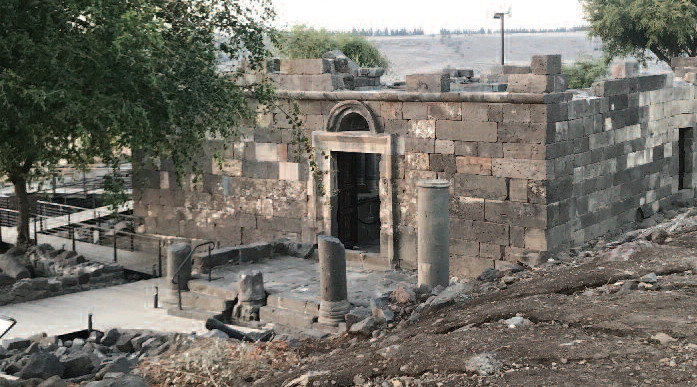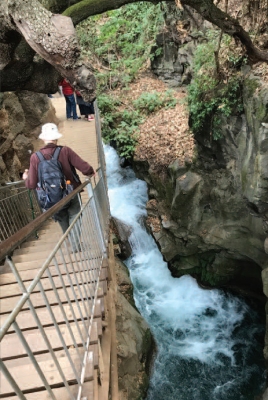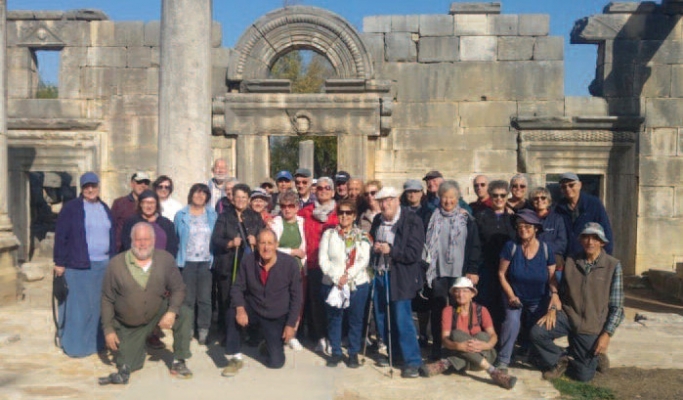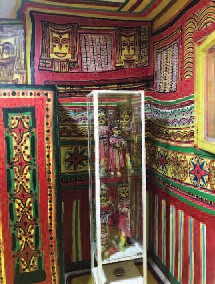Discoveries On a Trip North
Blue skies and a slight November chill in the air greeted us as we boarded our bus for our second Northern Region 3-day trip, this time to the far north of the country. Our fellow travelers came from towns all over Israel, making up a friendly and varied group.
We drove directly to Ramot Naftali in the Upper Galilee, to a new museum in the historic Nebi Yesha police structure dedicated to the fraternity of Palmach fighters. This fort, built by the British, commanded the main road (the Via Maris of ancient times, connecting Egypt to Syria - now Route 90). It was an observation point with strategic importance for the safety and future of the Jewish settlements around.
We heard the stories and tribulations of the pioneer settlers, and paid our respects at the Metzudat Koach Memorial to the 28 fighters who died in battles to take the fort from the Arab troops to whom the British passed it on when they left in 1948.
From there we travelled to Tel Hatzor National Park, also situated on Route 90, in the Hula valley. In the Canaanite period (the Bronze Age), Hatzor was the largest city in the Land of Israel and was destroyed during the time of Joshua. It was rebuilt in the time of King Ahab but the town was much smaller. The ancient deep water well has been discovered. It is one of the most important archaeological sites in the country, with biblical finds, with a potential for further extensive excavation.
In the late afternoon we drove to the Agamon Hula, where we toured in a covered cart amongst the tens of thousands of cranes that fly in to spend the night on the shallow lake together with the ibis and flamingoes. Formerly the cranes flew on in the winter to more southern climes, but with the changing climactic conditions, they are now happy to stay here.
It was a magical experience especially at sunset. We settled into our hotel, Ahuzat Yarden, and after supper got together to share details of ourselves and to get to know one another. This led to both new and renewed acquaintances and many Jewish Geography conversations!
On day 2, we started with a walk to the waterfall on the Banias River (Nahal Hermon) in the lower Golan. A group of us were given the opportunity to hike along the river from the waterfall to the springs, whilst the remaining group drove to the springs and went up to the Temple of Pan and the archeological remains whilst waiting for the hikers to join them.
Back on the bus, we drove to Katzrin on the Golan Heights where we walked around the beautifully reconstructed "Talmudic Village". We visited the synagogue and learned about life in the village from the Mishna period, and how they processed olives to collect the oil.
Our next stop was Umm El Kanatir, also known as Ein Keshatot, to see the arches over the spring and the ancient synagogue. The site was originally settled by Romans, as shown by the coins found in the ruins, and early Jewish inhabitants established a flax industry there. The synagogue, the largest of 25 synagogues so far found on the Golan, was built as the community expanded and flourished in the 5 th -8 th centuries CE. It was destroyed in the major earthquake of 749 CE and the town was abandoned. The synagogue has been restored using unique technology, labelling matching stones, and recently re-opened to the public after the renovations..
Day 3 started at the Baram National Park with a beautifully preserved ancient synagogue, where we posed for a group photo!
The style of the synagogue building suggests it was built in the 3 rd century, but coins found in the foundations of the building indicate that it was built in the late 4th or early 5th century. A possible explanation could be that it was built elsewhere, then moved to this site during the later period when it was forbidden by the rulers of the country to build new synagogues, but
they could be pulled down and rebuilt elsewhere.
We also saw the Marronite Church in the former Arab town of Bir'am, which existed until the War of Independence, and where its residents still aspire to return. A drive along the border with Lebanon, and a short walk up the hill took us to a spectacular
view of southern Lebanon at Mizpe Har Adir. The site is also a memorial to the 121 IDF soldiers who lost their lives in the second Israel-Lebanon war. Our next stop was the Painted House in Shlomi, a private house, decorated inside with traditional Yemenite motifs. After Afia Zacharia was widowed at the age of 80, she felt that she had been released from her husband's prohibitions and began to paint, as in the days of her youth in Yemen. She started with the walls of the house and then moved on to the windows, doors and ceilings, as well as dolls with traditional Yemenite female motifs. The Shlomi Council took the house under its wing and turned it into an extraordinary tourism site open to visitors.
Our final stop was at Gaaton Liqueur Visitor Center, where a film introduced us to the fruit liqueurs and wines manufactured at the kibbutz, and we tasted samples. We raised our glasses to thank our pleasant and knowledgeable guide, Yulia, and to celebrate the successful completion of an enjoyable and memorable trip












Comments